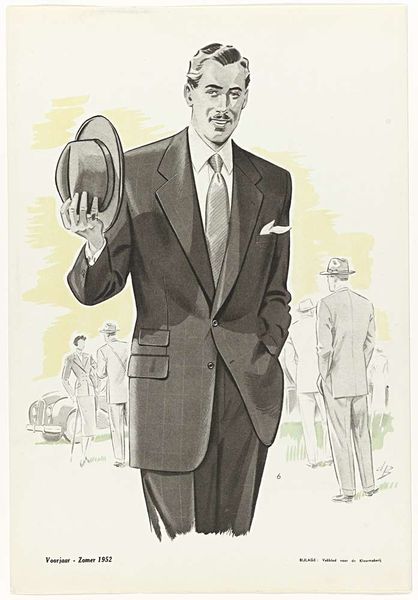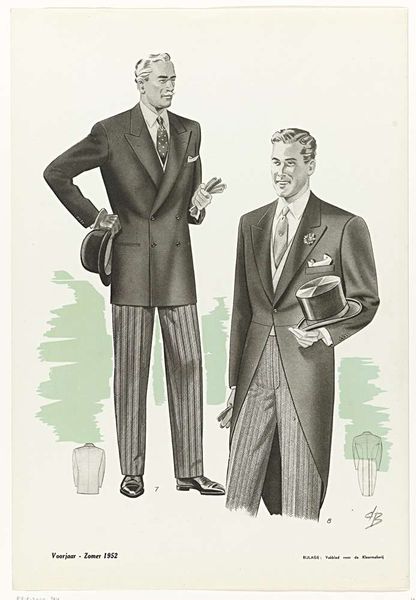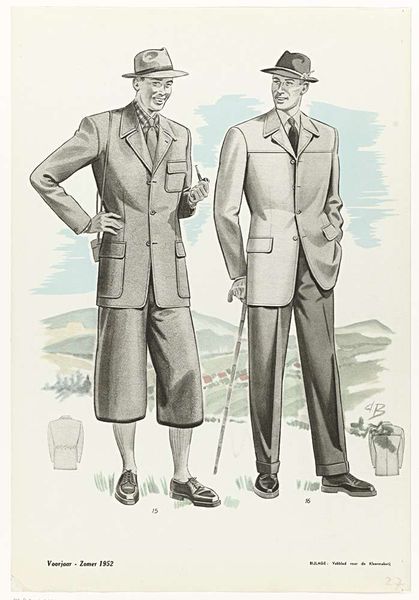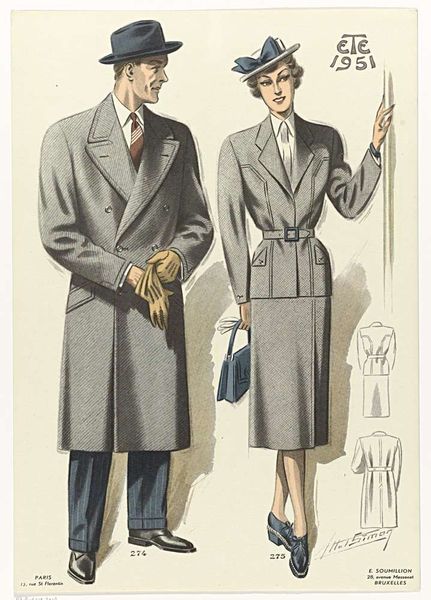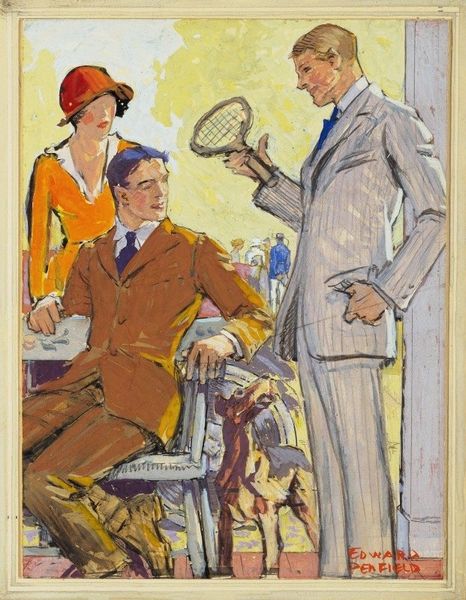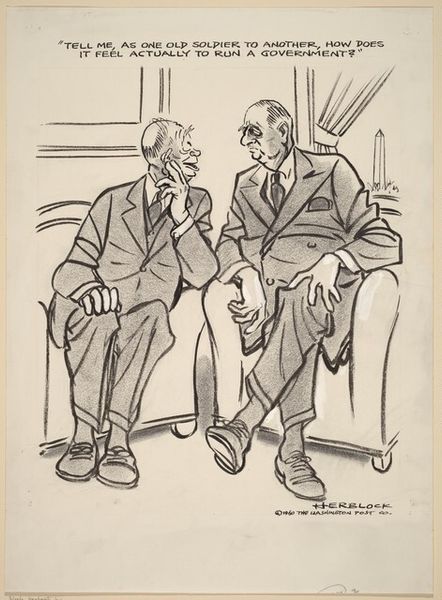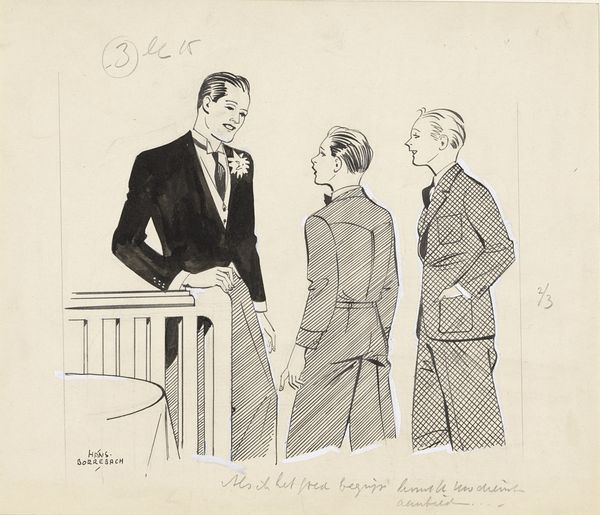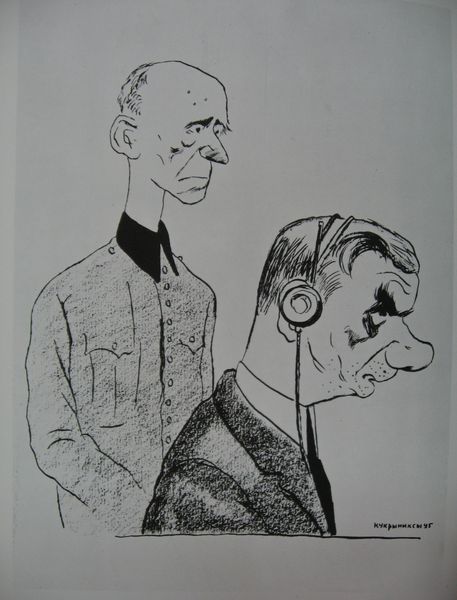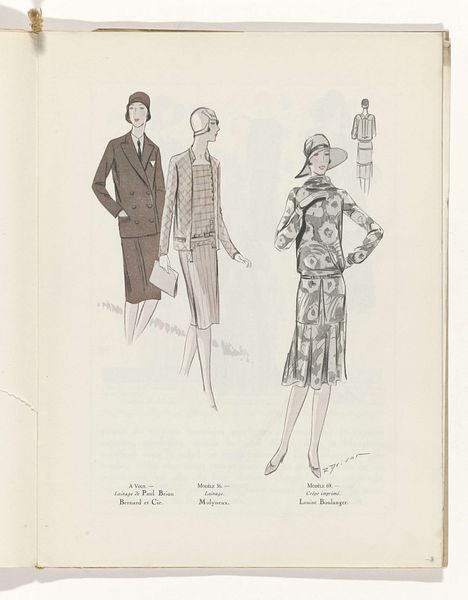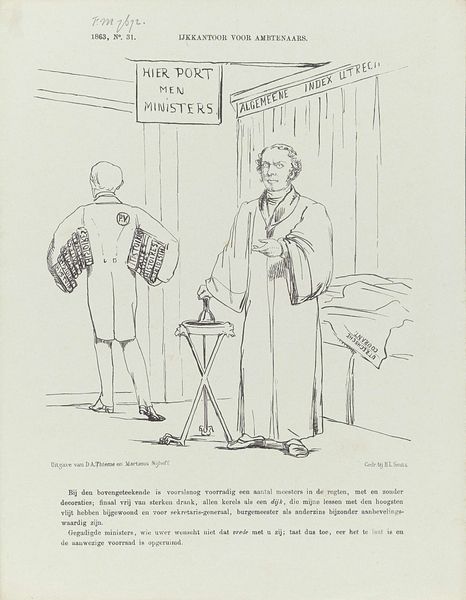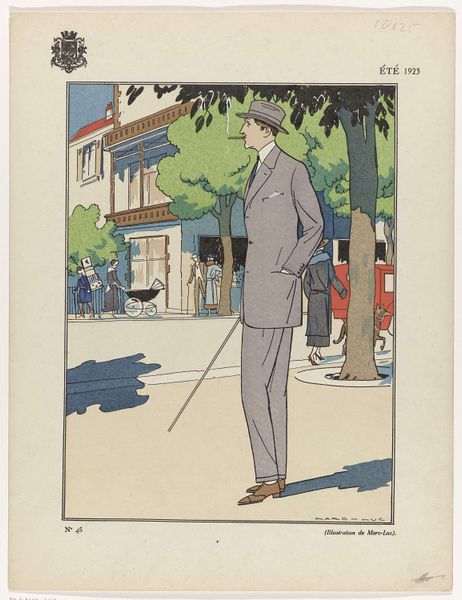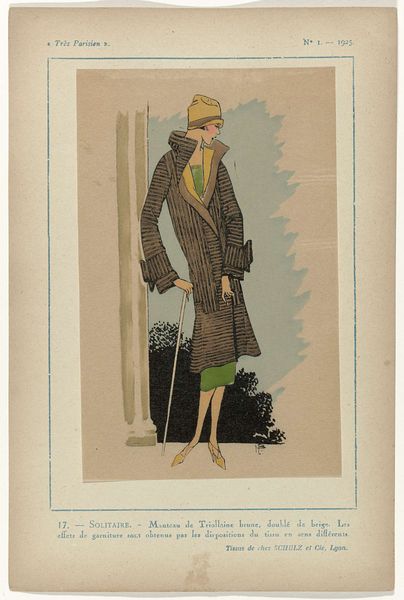
drawing, print, pencil
#
portrait
#
drawing
# print
#
traditional media
#
caricature
#
pencil
#
genre-painting
#
modernism
Dimensions: height 399 mm, width 273 mm
Copyright: Rijks Museum: Open Domain
Editor: This drawing is called "Vakblad voor de kleermakerij, Voorjaar-Zomer 1952, Nr. 1, 2 en 3" from 1952. It’s a print showcasing men's fashion, seemingly from a tailor's magazine. It feels very aspirational, presenting an ideal of post-war masculinity, but there's also something a bit… stiff about the figures. What strikes you when you look at this piece? Curator: The most compelling aspect, for me, lies in how this image functions as a social document. Fashion, perhaps more explicitly than other art forms, reflects and shapes societal values. The clean lines and reserved elegance here speak volumes about the aspirations of the 1950s: a return to order, prosperity, and a specific vision of masculine respectability after the upheaval of World War II. Do you notice how each figure, although presented as an individual, is essentially a variation on a theme? Editor: Yes, they all have very similar facial features and expressions. It's like there's a very specific mold they are supposed to fit into. Does that reinforce your idea about the return to order? Curator: Exactly! Consider the context of post-war reconstruction and the rise of consumer culture. Magazines like these played a critical role in defining "good taste" and encouraging a particular mode of consumption. These weren’t just clothes; they were signifiers of belonging and upward mobility. It's almost like these magazines manufactured consent through carefully constructed imagery, presenting not just garments, but lifestyles. Editor: That's fascinating. So, it's not just about the aesthetic value of the drawing itself, but about what it tells us about the society that created it and consumed it. I never thought about fashion in that way before. Curator: Precisely. Examining art like this teaches us to critically assess the power dynamics embedded within seemingly innocuous images and the roles institutions play in promoting these visions. Editor: I will definitely look at fashion magazines differently from now on! Thank you.
Comments
No comments
Be the first to comment and join the conversation on the ultimate creative platform.
